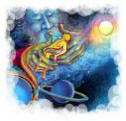The basic ideas behind clairvoyance are far from new. People have been channeling and communicating with spirits and generally getting messages from “the other side” for thousands of years. However the specific name clairvoyance is usually reserved for a particular brand of mediumistic trans-communication that became popular during the Victorian era. Believe it or not clairvoyance is a recognized religion. It is based upon the proof that the soul lives on after death. Spiritualists demonstrate that it is possible to communicate with the dead.

Clairvoyance was introduced to England in 1852 by a medium from America called Mrs. Hayden, who had suffered many hostilities from churches and press. However, she was backed up by such eminent people as Sir Charles Isham, Professor De Morgan, Robert Chambers and Dr. Ashburner. Keighley in Yorkshire became the first site in Britain to establish a Spiritualist Church which was opened by David Richmond in 1853 and it was also the first place to publish a Spiritualist Newspaper called ‘The Yorkshire Spiritual Telegraph in 1855. A great socialist called Robert Owen became interested in clairvoyance after having private sittings with Mrs Hayden in 1854. After his death he gave the seven principles of clairvoyance through a Medium called Mrs. Emma Hardinge Britten in 1871. The Two Worlds Newspaper which was first issued in 1887 published the seven principles in 1889. Mrs Emma Hardinge Britten was known as a very good medium and had returned to England in 1866 to promote clairvoyance.
The difference between clairvoyance and other religions is the ability through mediumship to provide evidence that man survives the grave; that is to say certain people called mediums are able to communicate with those who have passed over, thus furnishing evidence of their continued existence in another world. Mediums cannot call up these people as one would a friend on the telephone, they come to us, but only when they are ready, willing and able so to do.


